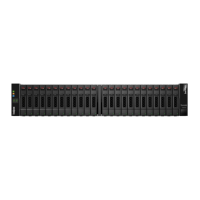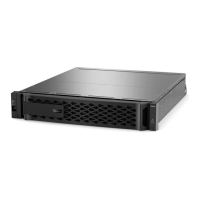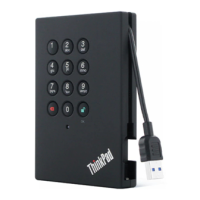When a controller has a fault and needs to be replaced, the replacement part number is
displayed in the Details area of the Recovery Guru. If you need to find this number manually,
follow these steps:
a.
Select Hardware.
b.
Locate the controller shelf, which is marked with the controller icon
.
c.
Click the controller icon.
d.
Select the controller, and click Next.
e.
On the Base tab, make a note of the Replacement Part Number for the controller.
4.
Confirm that the replacement part number for the failed controller is the same as the FRU part
number for the replacement controller.
Possible loss of data access — If the two part numbers are not the same,
do not attempt this procedure. In addition, if the failed controller canister
includes a host interface card (HIC), you must install that HIC into the new
controller canister. The presence of mismatched controllers or HICs will
cause the new controller to lock down when you bring it online.
5.
Back up the storage array’s configuration database using ThinkSystem System Manager.
If a problem occurs when you remove a controller, you can use the saved file to restore your
configuration. The system will save the current state of the RAID configuration database, which
includes all data for volume groups and disk pools on the controller.
◦ From ThinkSystem System Manager:
a.
Select Support › Support Center › Diagnostics.
b.
Select Collect Configuration Data.
c.
Click Collect.
Ê The file is saved in the Downloads folder for your browser with
the name,
*configurationData-<arrayName>-<dateTime>.7z*.
◦ Alternatively, you can back up the configuration database by using the following CLI
command:
a.
Download SMcli from ThinkSystem System Manager and set up SMcli command
execution environment.
b.
Execute the following SMcli command:
save storageArray dbmDatabase
sourceLocation=onboard contentType=all file="filename";
In this command, filename is the file path to which you want to save the database.
Enclose the file name in backslash following double quotation marks (\"). For example:
file="C:\Program Files\CLI\logs\dbmdata.zip"
19

